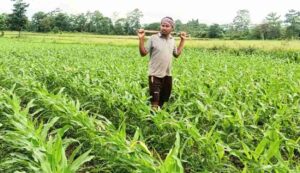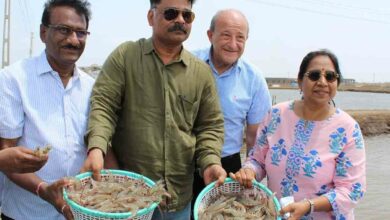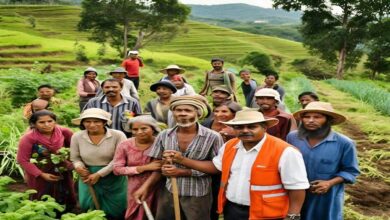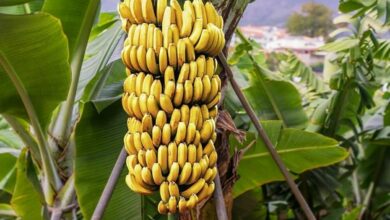Success Story: This 42-year-old farmer from Assam earned lakhs of rupees annually using integrated farming system
Success Story: For his family of four, 42-year-old farmer Bhuban Pegu of Dhemaji District, Assam, is the only source of income. At the age of 15, he started growing vegetables after a disastrous flood in 1989 made his property unusable for growing rice. In an effort to adjust, Bhuban and his father started experimenting with different crops that were appropriate for the soil and temperature of their area.

In 2015, Bhuban entered the commercial vegetable and fruit-growing industry after years of experimentation and improvement. He gradually increased the size of his land holdings, hiring many workers and purchasing 20 bighas for an orchard. Today, a wide variety of fruit, such as tomatoes, strawberries, chilies, and a 4-bigha organic papaya plantation, can be seen on his farm.
A dedication to sustainable practices and experimentation
Bhuban has a strong interest in agricultural research. In an effort to maximize output, he is always experimenting with crop kinds to find the ones that work best for his soil and climate. He uses natural and organic remedies since he is aware of the negative consequences of artificial fertilizers and pesticides.
Bhuban incorporates cattle into his farm to improve the quality of his land. His pigs, ducks, and hens help with the nutrient cycle, while his 30 cows provide the manure and urine for organic fertilizers. He has created a successful Integrated Farming System in his area by efficiently using animal manure to fertilize crops.
Growing Papayas Organically
Bhuban makes sure his 4-bigha papaya farm is completely organic, even if bug outbreaks sometimes necessitate the restricted use of pesticides for crops. Instead of using artificial chemicals, he uses compost and manure made on the farm from agricultural waste, urine, and cow and pig dung.
Achieving good yields depends heavily on the quality of the seeds. Premium seeds are sourced locally from the Silapathar District by Bhuban, whose orchard thrives on Sapna, Sinta, and Red Royale kinds. The state’s agricultural industry has advanced significantly with the availability of high-quality seeds in Assam.
Effective Techniques for Irrigation
Vegetables need very little water; therefore, Bhuban uses a water pump to satisfy his farm’s watering demands. Two to three well-timed irrigations are enough in Assam because of its humid environment.
The state government has authorized the building of a solar water pump on Bhuban’s property in appreciation of his efforts. In addition to saving power, this project will provide him and other local farmers a sustainable watering option.
Increasing Market Coverage
Produce from Bhuban is spread across Assam and Arunachal Pradesh’s several districts. He has established a solid local market presence, but by raising his yield and scaling up production, he now hopes to enter bigger national markets. From his fruit and vegetable goods, he earned around 15 lakhs a year.
He points out that because many people grow their own seasonal vegetables, vegetable costs often decrease between January and March. However, summer veggies start to sell for more money in April. Bhuban has already started preparing the area for cucurbit farming in anticipation of the next season. His greenhouse facility is essential to guaranteeing timely and consistent seedling development, which raises agricultural output even further.
Obstacles and Advice for Future Farmers
The agricultural path of Bhuban has been a difficult one. He has faced several setbacks, from the devastating floods of 1989 to the hailstorm of 2021, which caused losses in the king chili crop at Rs 4.5 lakh.
Bhuban is resilient and believes in working in harmony with nature in spite of these challenges. He thanks state agricultural agencies and Krishi Vigyan Kendras (KVKs) for their assistance, which has included training, demonstrations, and advice during trying times.
Bhuban promotes young knowledge of agriculture by highlighting the need for education in contemporary farming practices. He claims that knowledgeable farmers are better able to use pesticides appropriately, embrace cutting-edge farming technology, and adjust to changing farming methods. Even though farming could appear difficult at first, he thinks that young farmers will have a profound respect for the practice as they witness its benefits.
Additionally, he thinks that young farmers should look at options for value addition in addition to selling raw farm products, as this may greatly increase their profits.
The story of Bhuban Pegu is proof of creativity, tenacity, and environmentally friendly farming. He has set a great example for his community by combining livestock-based farming with organic methods. His accomplishments demonstrate how crucial flexibility, government assistance, and education are to contemporary agriculture. Bhuban’s tale inspires farmers who want to adopt integrated and organic agricultural practices as he continues to broaden his influence.





